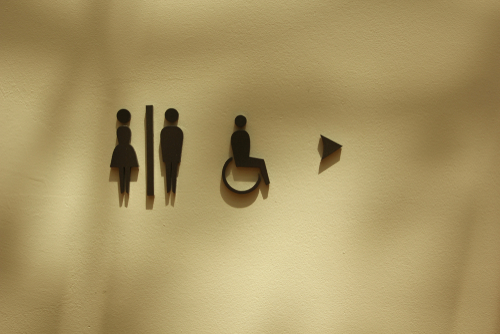Horrific school shootings, and gun violence in general, continue to make news headlines on a regular basis. There have been 465 mass shootings in the U.S. so far this year (as of August 24, 2023), according to the Gun Violence Archive, including at least 20 K-12 school shootings. A total of 27,935 people have died from gun violence in the U.S. this year. And of those who died, 1,163 were children, with another 3,163 children suffering injuries. With the ongoing incidence of school shootings and gun violence, the disability community and its supporters are duly asking… are disabled students more vulnerable during school shootings?
Perhaps so. But, there is something parents of students with disabilities can do…
Why Are Disabled Students More Vulnerable During School Shootings?
Among developed economies, the U.S. has the highest level of gun violence. In 2020, guns overtook auto accidents as the leading cause of death among children and teens, according to data by the CDC. In response, most schools have adopted emergency response protocols that include preparations for active shootings. However, some worry that these plans do not adequately consider the varying needs of students with disabilities.
The current active shooter response plan, as published by the Department of Homeland Security, outlines three steps: evacuate, hide out and take action against the active shooter. No parent wants to envision their children having to run for their lives, quietly hunker down in a classroom’s storage closet or, worse case scenario, physically defend themselves or others from life-threatening danger. But let’s face it… a “run, hide, fight” approach just isn’t realistic for everybody, including many students with disabilities.

It’s important to note that the issue of disabled students being more vulnerable during school shootings concerns a significant chunk of the school population. In 2020–21, the number of students ages 3–21 who received special education services under the Individuals with Disabilities Education Act (IDEA) was 7.2 million, or 15 percent of all public school students, according to the National Center for Educational Statistics. Obviously, it is not acceptable to knowingly allow that percentage, or any percentage for that matter, of students be more vulnerable during school shootings or other emergent scenarios.
Adding Emergency Response to IEPs
As the saying goes, “inclusion matters” and, in preparing for the unthinkable like school shootings, it’s important for parents of students with disabilities to advocate for necessary safety measures. Disability advocates suggest that parents talk with their child’s school administrators about formerly including emergency protocols in their Individualized Education Program (IEP). An IEP typically lays out a plan for a student’s special education instruction, supports and services so that child reach their full potential in the education setting. When you think about it… why haven’t campus-based, crisis-related responses always been included in IEPs?
For instance, students who have mobility limitations or rely upon accessible equipment such as wheelchairs, walkers and crutches may need assistance exiting a building or getting to a safe shelter. Students that have “invisible disabilities” like ADHD, autism spectrum disorder and other intellectual disabilities may become overstimulated by loud sounds (i.e. alarms, gunfire, screaming), have difficulty processing and executing directions, or be unable to remain still or quiet.
During a collaborative strategy session, parents and school personnel can discuss anticipated responses and what actions would be most effective if needed. Here are some safety aspects to ponder:
- Is the student physically capable of getting to a designated safe space without teacher assistance?
- If assistance is needed, who (specific name) is responsible for getting the student to safety in an emergent situation? Who is the back-up person?
- Is the student able to understand when an evacuation would need to happen? Can the student promptly process the directions?
- Does the student and/or staff need additional active shooter drill practice?
- Will the student’s access to medications remain accessible? Is it necessary to create a “emergency evacuation kit” to include essentials (i.e. inhalers, insulin, etc.)?
- Will their medical devices and/or assistive technology be transported?
- Does more than one plan need to be created based the location of the emergency (i.e. cafeteria, playground, classroom, etc.) and differing scenarios?
- Are there alternate exits from higher floors if safe elevator access is compromised?
- How will parents be notified of an emergent situation?
- Are local emergency responders aware of the student’s needs? Should emergency responders be involved in the planning process for the student?
- Does the student need to learn what to do if a teacher and/or student is seriously or fatally injured?
If all questions have been asked and answered, a parent may feel confident having the emergency plan attached as an addendum to an existing IEP. Remember, IEPs are fluid documents and can be revised as needed. Aside from active shootings, parents may also consider incorporating plans for other types of emergencies, like earthquakes, fires, floods, hurricanes and tornadoes.

Help Prevent Gun Violence
Beyond school shootings, children and teens in the U.S. are impacted by gun violence in all its forms, according to Everytown for Gun Safety Support Fund. Every year, 19,000 children and teens are shot and killed or wounded, and approximately three million are exposed to gun violence. This exposure can have a significant impact on one’s mental well-being. Here are some ways to prevent gun violence:
- Proper gun storage. Firearms should be safely locked, unloaded and kept separate from ammunition. Aside of one’s personal home storage, parents should also consider speaking with playdate hosts to ensure firearms are properly stowed.
- Talk to your children about gun violence. Conversations may include gun safety (i.e. instructing child to leave a room immediately if a friend plays with a gun), and also the reasoning behind active shooter drills.
- Advocate for safety. Tell elected officials that inclusive safety is important for the community, including gun violence policies.
- Take more action. For more solution-based ideas aimed at combating gun violence, review guidance by Everytown for Gun Safety Support Fund or the Sandy Hook Promise Foundation.
Do you plan to update your child’s IEP to include emergency safety protocols?
Want more content like this? Read:
- School Nursing Policy in Question After Needs of Student with Disability Not Met
- 10 Ways to Support Your Child’s Special Education Teacher
- New Training Courses Help Bus Drivers Better Support Students with Disabilities
[Editor’s Note: AmeriDisability originally published this article on March 27, 2023. At that time, 131 mass shootings had occurred in the U.S., according to the Gun Violence Archive. Our publication reported this statistic following a mass shooting at a Christian elementary school in Nashville, which claimed the lives of six incident people (including three young children), when a former student armed with two assault-style weapons and a handgun opened fire. We’re now shocked and saddened to report how much the number of mass shooting has increased.]






